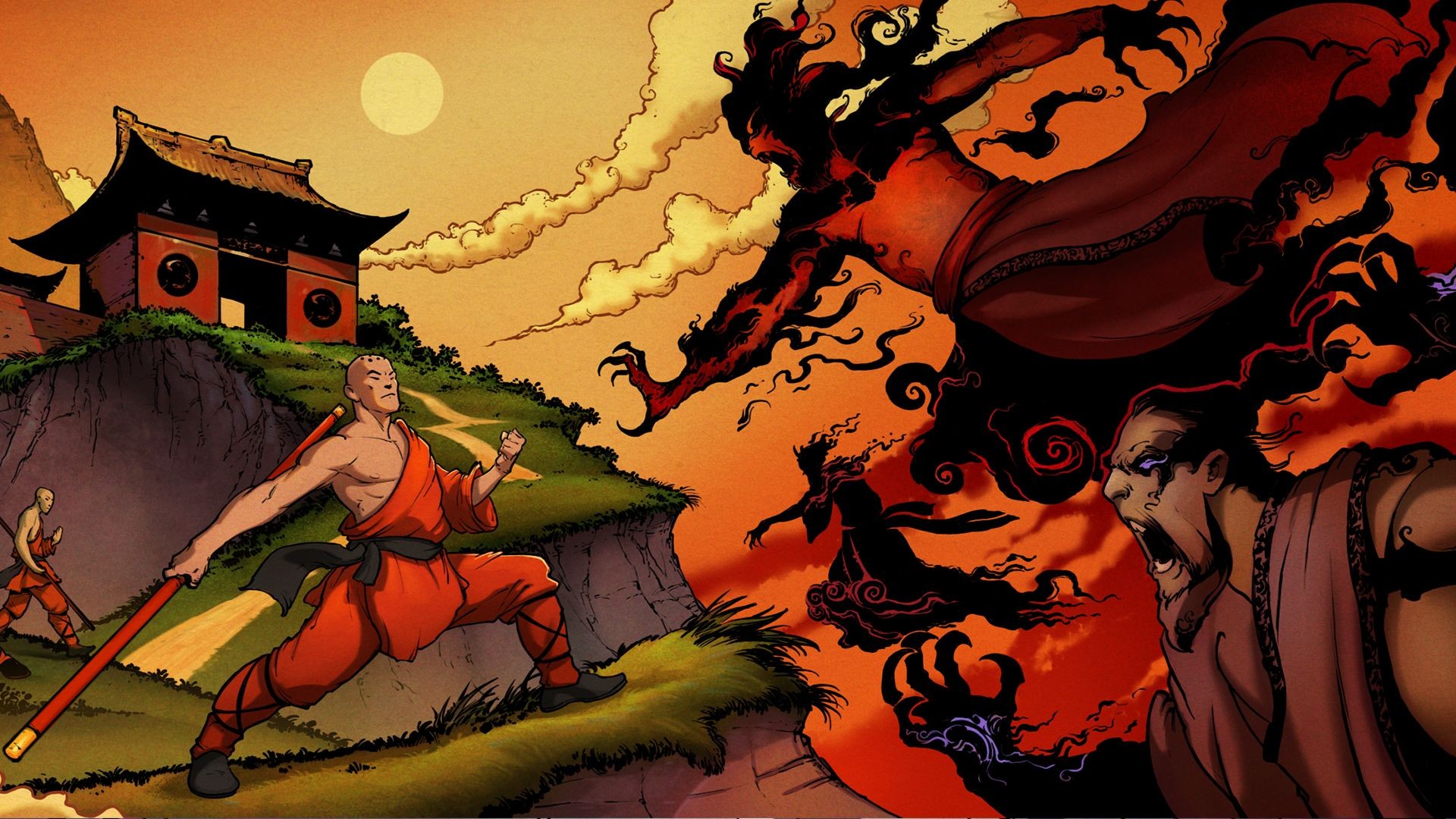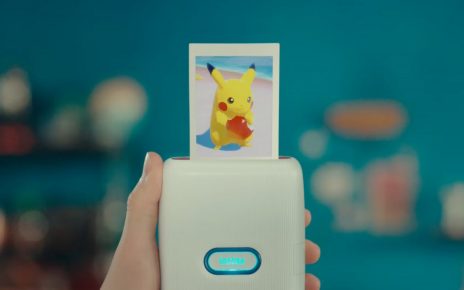Hello everyone! I’m Mikhail and I am the creative director and animator at Sobaka Studio. Our new game 9 Monkeys of Shaolin just released on Xbox One and because of that, I would like to share some interesting details of its development with you!
When we successfully launched our first game, Redeemer, we came up with an idea to create an old-school beat’em up in the spirit of classics like TMNT: Turtles in Time or Double Dragon but in the style of kung fu action movies of the late ’70s. These games and movies about martial arts had a special part in our childhood and we also already had enough necessary experience to take on such a project.
During the past 30 years since the 16-bit era, the beat’em up genre has evolved and grown and these days games like Final Fight and Golden Axe were succeeded by masterpieces like Batman: Arkham series or God of War. But like many other gamers, we miss those classic silly games about throwing punches.
Of course, similar games come out even today, but we believe that most of them miss something: either the game mechanics or graphics are hopelessly outdated, or the atmosphere is not the same as it was in the past…
In Sobaka Studio we knew how to create an old school game just right: by respecting the classics while not ignoring modern solutions. Thus we’ve started to work on the game of our dream. The game that we would also love to play ourselves.
Visual Style
After finishing Redeemer we wanted to move away from realistic graphics and make something unusual and emotional. Of course, it was risky: stylized graphics could deter some players but we stood by this creative decision and in the end this would help to deliver a more vivid experience.

Classic beat’em up games bonds in my mind with American comic books. Teenage Ninja Turtles, Comix Zone, and even Streets of Rage feel like animated superhero magazines. And from my point of view, this style fits such games perfectly: bold shadows and outlines made with ink, high contrast and vivid colors go well with the dynamic and healthy aggressiveness of these games.
I really wanted to preserve all of these in 9 Monkeys of Shaolin in some shape or form. And because of that, very hard lighting prevails in our game along with the harsh ink-like shadows, aggressively vivid colors, chopped shapes of characters.
We used a little less aggressive, hybrid style, reminiscent of American comic books and classic Chinese art at the same time for the story illustrations which were created for us by talented artist Constantine Ponari. These illustrations kind of link the plot, similar to the old Chinese fable with the gameplay inspired by Western pop culture.

The plot and atmosphere of 9 Monkeys of Shaolin resemble the movies of the ’70 and ’80s such as “The 36th Chamber of Shaolin,” “The Eight Diagram Pole Fighter,” and “The Shaolin Temple.” And in terms of visual style, I was inspired by more modern movies like “Hero” and “House of Flying Daggers.”
Color grading in these movies always gave me a kind of aesthetic ecstasy, so I wanted to at least try to replicate some of the tricks that I saw. Because of that, each location of our game has its pronounced color. Like for example the color palette of the burning village is mostly fiery orange, a bamboo grove is green, and a sun-drenched temple in the forest is yellow.
Basically, I wanted to make the visual style of the game feel as hard as a battle staff hitting you in a jaw. Because our game is about this: about beating different foes with a stick.

While the story of our game is somewhat deeper than it might seem at the first glance, the foundation of 9 Monkeys is fighting. I wanted to make the graphics in the game perceived by the cerebellum and support the player’s aggression without any tricks.
When our character modeler Eduard Kotsia showed a draft of the hero’s model I was confused at first because it looked way more rude than what I imagined.
But then I realized that it’s exactly what we need! Characters became even more chopped and rigid than it was intended. And thanks that our game looks even more dynamic, and the foes have such punchable faces that you just want to hit them with a club (which is coincidentally the basis of the game!).
Animation
It was very exciting to work on combat animation. We almost didn’t use motion capture – all the hits, kicks and various tricks of the characters were animated manually.

I have watched many hours of video lessons about battle staffs, exotic weapons like an eku (a wooden oar used as a piercing and smashing weapon) or kusarigama (a sickle and a heavy iron weight linked with a metal chain), a bunch of showcase performances of modern masters who use these weapons. While making Wei Cheng’s animation with a staff I realized that it’s not enough to just watch the video. So I disassembled a mop and began to train with it. Trying to figure out how to spin the staff properly I broke many vases and plates at our office during development but it was worth it!
Our studio’s philosophy is to always put gameplay first, and thus we often had to sacrifice a bit of historical accuracy and sometimes even common sense for the sake of exciting gameplay.

And it’s not just magic seals — even the base stance of the hero with staff doesn’t fit well for the real fight. But on the other hand, it’s understandable and easy to read in the game. By the way, it’s also one of the reasons why we decided not to use a motion capture: sometimes it’s just not about the realism, but about clear and cool-looking animation of what was happening on the screen.
And now, after almost three years since the start of our journey, I can easily and quite confidently say that 9 Monkeys of Shaolin looks very cool and is really fun to play!
I sincerely hope that the players will enjoy the game as much as we had while its development.

9 Monkeys of Shaolin
Ravenscourt
Related:
Pre-order Planet Coaster: Console Edition, coming November 10
Free Play Days – Warface: Breakout, The Escapists 2, and AO Tennis 2
30 Games Fully Optimized on Xbox Series X and Xbox Series S Launch Day






